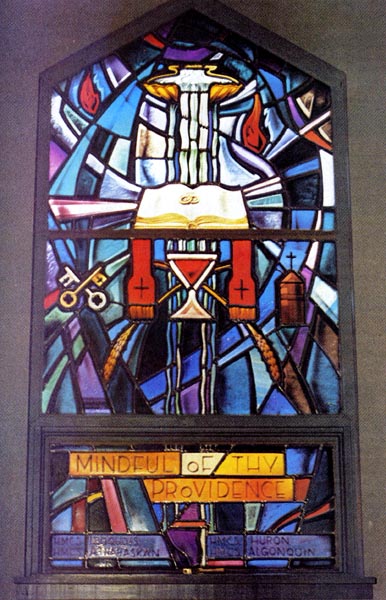THE SHIPS
In the early 1970's, a new version of the Tribal class destroyer was commissioned into Canada's navy. These were colloquially referred to as the 280 class. Although originally termed Tribal class destroyers, today's navy has included them so as to conform with class identity by 'lead ship' names in construction programmes. Examples of these are: Halifax class frigates, Oberon class submarines, Kingston class maritime coast patrol vessels. In the case of the newer 'Tribals', the second Iroquois was the first of four commissioned and are now designated as Iroquois Class destroyers type DDH (Designated Destroyer Helicopter).
The ships of the class are listed in alphabetical order which comprise the original eight Tribal class destroyers built during World War 2 and the four Iroquois class successors.
| NAME | CLASS | PENNANT |
|---|---|---|
| ALGONQUIN | Iroquois Class | DDH 283 |
| ATHABASKAN | Tribal Class | G07 |
| ATHABASKAN | Tribal Class | DDE 219 |
| ATHABASKAN | Iroquois Class | DDH 282 |
| CAYUGA | Tribal Class | DDE 218 |
| HAIDA | Tribal Class | DDE 215 |
| HURON | Tribal Class | DDE 216 |
| HURON | Iroquois Class | DDH 281 |
| IROQUOIS | Tribal Class | DDE 217 |
| IROQUOIS | Iroquois Class | DDH 280 |
| MICMAC | Tribal Class | DDE 214 |
| NOOTKA | Tribal Class | DDE 213 |
DDE = Designated Destroyer Escort; DDH = Designated Destroyer Helicopter
- Two ships of the RCN in the past carried Tribal names but were not
Tribal Class destroyers. These were HMC Ships Algonquin and Sioux.
Completing Canada's inventory of eleven modern destroyers of the day at the end of WW2 included (seven) "Tribal" Class, (two) very similar in design "V" Class and two "Cr" Class, that were transferred to the RCN from the Royal Navy. The two "V" class vessels were HM Ships Valentine and Vixen and were re-named HMC Ships Algonquin and Sioux respectively while HMC Ships Crusader and Crescent retained their RN christened names. Since Algonquin and Sioux were obvious Tribal names and the fact that Crusader, Crescent, and the seven tribals were all very similar in appearance, it becomes misleading. Hulls were almost identical all having a foc'sle break, a low freeboard iron deck, catwalks, and similar weaponry but there remained one glaring difference. The Tribals had two funnels servicing three boilers while the other four only had a single funnel that looked after the needs of only two, but larger boilers.
The names of the WWII Tribals were assigned in the following groups:
1. IROQUOIS, ATHABASKAN, HAIDA and HURON
2. MICMAC and NOOTKA
3. CAYUGA and ATHABASKAN (219)
The names for Group 2 were not decided until well after they were laid down while the names for Group 3 were not decided on nor promulgated until about 1946 or so.
Among the present day "Iroquois Class" ships, for which serving members sail in is HMCS Algonquin, attached to the west coast fleet and chosen as a fourth tribal name in the class."
TRUMP
The Tribal Class Update and Modernization Project (TRUMP) was a conversion programme that converted the four Iroquois class ships to the primary role of area air defence. Initially, they were armed with a 5 inch gun, a Mk X Anti-submarine (A/S) mortar and two Sea Sparrow A/S missile launchers. New and improved combat systems include SM2 Block 2 missiles fired from Mk 41 vertical launch system, OTO Melara 76 mm Rapid Fire gun, and Phalanx CIWS (Close In Weapon System). This weapon is designed as a last ditch defence against incoming anti-ship missiles (SSM) and is in naval terms, a very close range weapon. Existing helicopters and homing torpedoes have been retained, but obsolete anti-submarine mortars were removed.
When originally constructed, the Iroquois Class ships were very distinctive looking in that the twinned funnels were 'raked' outboard. This was done for fear that funnel gases might interfere with helicopter operations immediately aft on the flight deck. This phenomena never became a hazardous factor after all and so during the major conversion, they were strikingly transformed into a more conventional, single, straight-up funnel. All 280 Class Trump refits were carried out in the Davie Shipyard in Lauzon, Quebec.WINDOWS IN HALIFAX
 |
Twelve stain-glass windows in the Memorial Chapel at CFB Halifax have a story to tell.
The chapel serves and commerates people whose lives are, or were, involved in going to sea, or flying above it. Earlier in 1974, one of the windows was presented in commemoration and appreciation of all who served in the previous generation of Tribal class destroyers. It was presented by those now serving in the newer Tribals.Fifty members from each of the newest ships - HMCS Iroquois, Huron, Athabaskan and Algonquin attended the ceremonies.
The theme phrase of the windows is, "Mindful of Thy Providence". The names of the new Tribals appear at the base of the window. The window was unveiled by the commander of Maritime Command, Rear-Admiral D.S. Boyle. It was dedicated by Capt. R.A. Jones , padre with the First Destroyer Squadron. (Photo # ISC 74-1133. Copied from Sentinel edition 1974/9)
CREDITS and ACKNOWLEDGMENTS
- * D.H. "Buster" Brown - Halifax, N.S.
* Walter Emery (Deceased) - Dartmouth, N.S.
* John Clark - Ontario
* The Ships of Canada's Naval Forces 1910-1993 by Ken Macpherson and John Burgess.
Vanwell Publishing Ltd. St Catharines, Ontario.
* 'The Tribals' - Biography of a Destroyer Class by Martin H. Brice.
* HMCS HAIDA Naval Museum
* MARLANT Home page (RCN).
* MARPAC Home page (RCN).
* HMCS IROQUOIS Home Page.
* Canadian Navy Yesterday and Today Home Page.
* Groliers Encyclopedia - Software Tool Works CD
Back to Home Page
- July 22/08